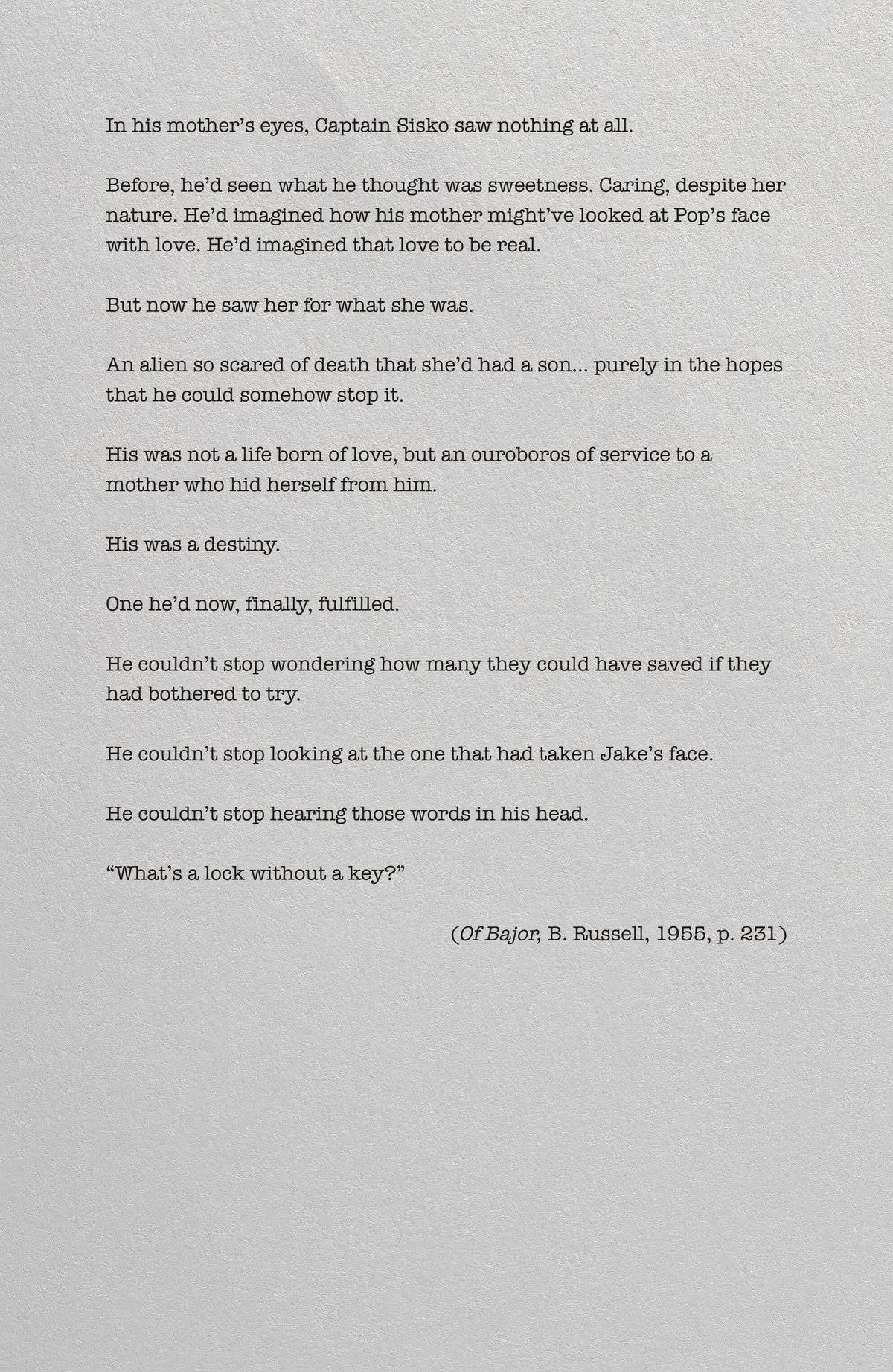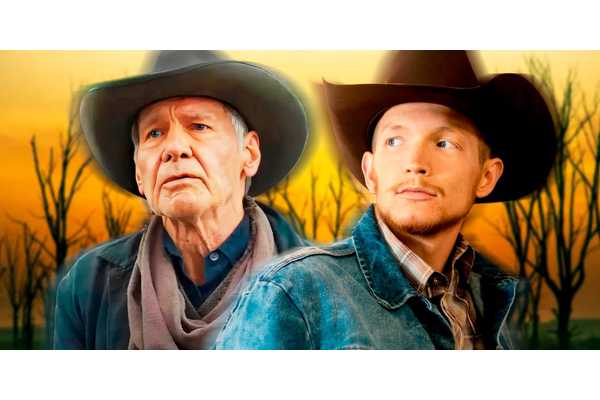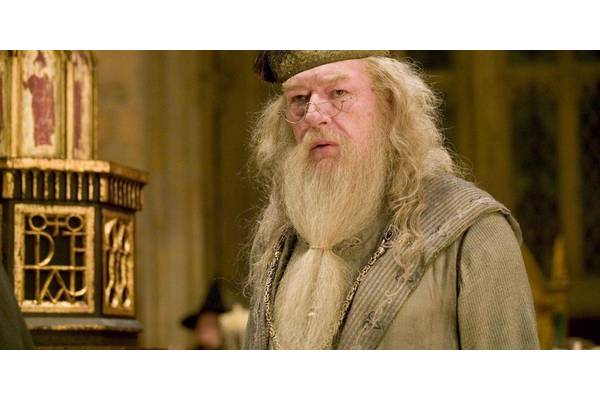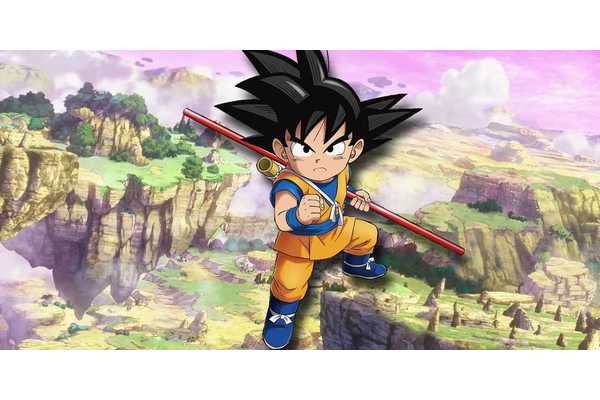Star Trek Smashes the Fourth Wall by Revisiting a Character I Never Thought We'd See Again
Warning: contains spoilers for Star Trek #29!
Star Trek just smashed the fourth wall by revisiting a character I thought we would never see again. While Star Trek is not normally known for this, the franchise flirted with fourth-wall breaking in one particularly memorable episode of Deep Space Nine. Now, in Star Trek #29, a “character” from that episode makes a surprise return at the universe’s darkest hour.
Jackson Lanzing and Collin Kelly have an extensive history with Star Trek comics, having written others for IDW as well.
Star Trek #29 was written by Jackson Lanzing and Collin Kelly and drawn by Tess Fowler. The Prophets have informed Sisko that his universe, or “the construct,” is different from what he knew, and he must remain with them. Sisko also learns his true purpose as Emissary was to protect the Prophets. As he tries to process this information, the action cuts to a text piece, resembling a page from a story, describing how Sisko realizes the Prophets are afraid of dying, and how this has informed their actions. The “story,” called “Of Bajor,” was attributed to B. Russell.
"Far Beyond the Stars" Was Deep Space Nine's Fourth-Wall-Breaking Masterpiece
"Far Beyond the Stars" Took an Unflinching Look at Racism
Of course, “B. Russell” refers to Benny Russell, a name familiar to Star Trek fans. In the sixth season Deep Space Nine episode “Far Beyond the Stars,” Captain Sisko receives a vision of himself and his friends working as writers for a science fiction magazine in the early 1950s. In this reality, Sisko, or “Benny,” is a gifted writer composing stories about life aboard a space station in the future. While Benny’s stories are excellent, he faces a glass ceiling due to his race. Because Benny is Black, he is marginalized, and his work goes into obscurity.
The episode is well-written and well-directed, and much of its heft comes from Avery Brooks’ searing performance as a man struggling to make a name for himself in a society that views him as a second-class citizen.
“Far Beyond the Stars” is rightfully regarded as one of Star Trek: Deep Space Nine’s finest hours, appearing regularly in top ten lists. The episode is well-written and well-directed, and much of its heft comes from Avery Brooks’ searing performance as a man struggling to make a name for himself in a society that views him as a second-class citizen. Star Trek has never failed to criticize racist attitudes, and “Far Beyond the Stars” was its most pointed critique to that point. Even 25+ years after its first airing, “Far Beyond the Stars” has lost none of its power.
Prior to "Far Beyond the Stars," Star Trek Had Never Broken the Fourth Wall
Was the Entire Star Trek Franchise a Creation of Benny Russell?
“Far Beyond the Stars” also did something that, up until then, Star Trek had never done before: break the fourth wall. The stories that Benny Russell wrote were set aboard a space station called Deep Space Nine. Many of the situations and incidents Sisko and his crew experienced were also short stories by Russell. Sisko’s colleagues from the station appeared in his vision, as members of 1950s American society: Odo, in a human form, was the magazine’s editor, while Dukat and Weyoun appeared as fascist, racist police officers, reflecting their personalities in the 24th century.
Fans praised “Far Beyond the Stars” not only for its sharp social commentary, but also its groundbreaking, meta-textual story–and, according to legend, Star Trek: Deep Space Nine’s creative team intended to do more with it.
Fans praised “Far Beyond the Stars” not only for its sharp social commentary, but also its groundbreaking, meta-textual story–and, according to legend, Star Trek: Deep Space Nine’s creative team intended to do more with it. Some sources have claimed that Deep Space Nine’s final episode would have ended with someone yelling: “cut,” and pulling back to reveal that the episode, and the entire show, was based on Benny Russell’s writings. By extension, the entire Star Trek franchise would have been Russell’s creation. While a bold move creatively, it would have shredded the Star Trek franchise’s continuity.
Star Trek Should Break the Fourth Wall More Often
Star Trek Did a Musical Episode--Could a Meta-Textual One Be Far Behind?
“Far Beyond the Stars” showed there were great story possibilities in breaking the fourth wall, but it is an opportunity the franchise has been slow to pick up on. Star Trek: Lower Decks has come the closest: it regularly sends up established franchise tropes, but the characters never acknowledge the audience. Perhaps the closest Lower Decks came to doing so was “In the Cradle of Vexilon,” a fourth season episode. The show regularly mentioned a “Black Mountain,” and when fans finally saw it, it bore a strong resemblance to the Paramount Pictures logo.

Star Trek Is Ready to Break Bad With One of Starfleet's Heroes, Teasing Their "Worst Day" Ever
IDW has announced Star Trek: Lore War: Shaxs' Worst Day, a special one-shot that sees Lower Decks' tactical officer become that which he hates.
The newer crop of Star Trek television shows have been willing to embrace new types of episodes, including musicals, which means the time is right for the franchise to try breaking the fourth wall. The trick will be to do it properly, and Star Trek #29 gives a great example on how to do it. The text piece resembling Benny Russell’s short story is not only an Easter Egg, but also gives insight into the horrible situation Sisko now finds himself in. Fans learn that the Prophets are scared, which will inform Sisko’s actions during the upcoming Lore War.
What Does Benny Russell's Return Mean for Ben Sisko?
And Will Star Trek Ever Break the Fourth Wall Again?
Benny Russell’s “return” in Star Trek #29 comes as the multiverse has been destroyed and replaced with a blasphemous version created by Lore. The brief fourth wall breaking in this issue came at a critical moment in the story, when Sisko realizes the Prophets have played him as a fool. What triggered Sisko’s vision of Benny Russell in the first place was never revealed, but something happened here to bring Benny back. His return in this issue was most shocking, but welcome–and a reminder that Star Trek should break the fourth wall more often.
Star Trek #29 is on sale now from IDW Publishing!











